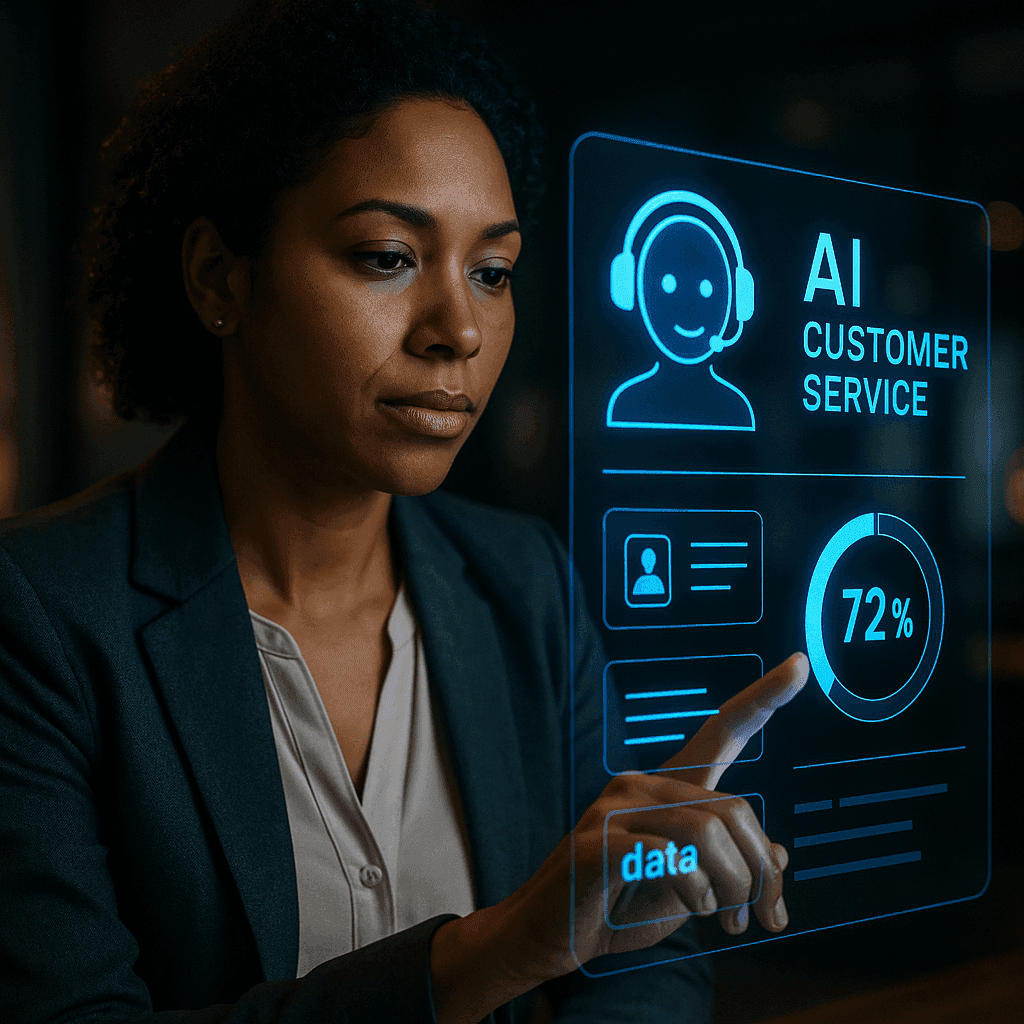Truth in the AI Era: How to Verify What Your AI Tells You

Intro: AI's Confident Lies & Your Need for Truth
Ever asked an AI chatbot a question, gotten a super confident answer, and then wondered, "Is that actually true?" You're not alone. In our new world of generative AI – from chatbots to voice assistants – information is everywhere. It’s instant, persuasive, and sometimes… confidently wrong. This isn't just annoying; it's a rapidly growing challenge that can derail decisions and erode trust for businesses and individuals alike.
Think of it like this: AI is an amazing chef, whipping up incredible dishes at lightning speed. But sometimes, it accidentally throws in a spoonful of salt instead of sugar. Deliciously plausible, but ultimately… off. The good news? We’re getting better at spotting that extra salt.
The Misinformation Tsunami: Why AI Makes It Worse
Misinformation was already a problem. With AI, it’s a tsunami. Generative AI creates convincing (but false) content faster than any human can keep up.
What makes verifying AI "facts" so tricky?
- Hallucination Station: AI models often "hallucinate" – confidently making up facts or sources that don’t exist.
- Elusive Truth: In a polarized digital world, defining "truth" is hard enough. AI can add to the ambiguity.
- Deepfakes & Overload: We’re drowning in content, and distinguishing real from fake is harder than ever with sophisticated deepfakes and manipulated media.
It’s not just a feeling. Over 60% of internet users are exposed to AI-generated false or misleading information weekly. For businesses, this means reputational damage, operational risks, and costly bad decisions based on faulty AI data.
Wresting Back Control: AI Tools & Your Savvy
Thankfully, the same brilliant minds building AI are also creating powerful tools to combat misinformation. Here’s how the fightback is shaping up:
- Automated Claim Detection: Tools like ClaimBuster use NLP to sniff out "check-worthy" factual statements from vast text (e.g., speeches, social media).
- Credibility Signals: Services like NewsGuard embed reliability scores and transparency ratings into web content and search results.
- Fact Extraction & Comparison: Platforms like Full Fact automatically compare claims against authoritative databases, flagging mismatches.
- Multimodal Analysis: AI now analyzes images, videos, and audio for authenticity, detecting manipulations.
- Bot Hunters: AI identifies coordinated bot networks spreading disinformation.
- Smart Source Retrieval: Snopes FactBot uses Retrieval-Augmented Generation (RAG) to instantly search its archive, finding and citing real facts transparently.
Even with this tech, you are the ultimate fact-checker. Here are timeless best practices:
- Cross-Reference: Check AI outputs against trusted academic databases (JSTOR, PubMed) and official sources (.gov, .edu).
- Go to the Source: Rely on major, reputable news outlets (BBC, NYT) and official organizational websites.
- Multiple Perspectives: Evaluate several sources, assessing author credentials and source authenticity.
Real-World Wins: Putting AI Fact-Checking to Work
These tools are making an impact:
- Duke Reporter’s Lab's ClaimBuster helps journalists focus on critical claims.
- NewsGuard and Logically empower users with real-time reliability ratings.
- Snopes FactBot demonstrates transparent, source-cited generative AI.
- Indiana University's Bot Repository flagged coordinated bot campaigns during major events.
- One Fortune 500 company implemented mandatory AI cross-reference protocols, reducing misinformation incidents by 40% in six months. That's a serious win!
The Crystal Ball: What’s Next for Truth and AI?
Where are we headed? Experts agree:
- Human-AI Tag Team: AI won't replace human fact-checkers. It's a powerful partnership: AI handles large-scale detection, and skilled humans tackle nuances.
- Smarter AI: Expect AI to improve at understanding context, meaning, and analyzing all media types, leading to more accurate fact-checking.
- Your Personal Truth Guardian: Imagine an always-on AI assistant on your device, acting as your personal misinformation shield.
- Rules of the Road: Expect increasing calls for regulations and ethical guidelines for AI fact-checking.
The Bottom Line: Stay Smart, Stay Skeptical, Stay Safe
In the age of AI, verifying facts is crucial for protecting your business and your decisions. The winning strategy combines:
- Automated claim detection.
- Rigorous cross-referencing with authoritative sources.
- Multimodal media analysis.
- Most importantly: human oversight and critical thinking.
Businesses investing in these tools, training, and protocols for vetting AI-generated content will navigate this new information landscape with confidence. Trust is the ultimate currency, and in the AI era, earning it means ensuring your facts are always in check.
More Articles

The CX Revolution: 65+ AI Customer Service Stats You Need for 2025
Explore how AI is rapidly transforming customer service by 2025, from lightning-fast chatbots to hyper-personalization, and why a human touch still matters.

Is AI Taking Over Customer Service? What 2025 Really Looks Like
Explore how AI is reshaping customer service in 2025, from hyper-personalization to autonomous agents, and discover the essential balance between efficiency and the human touch.